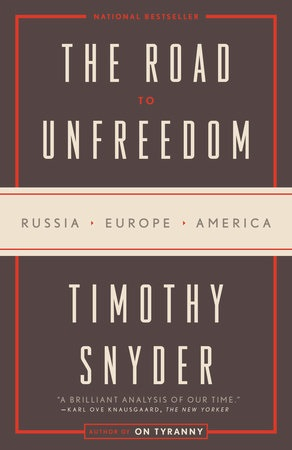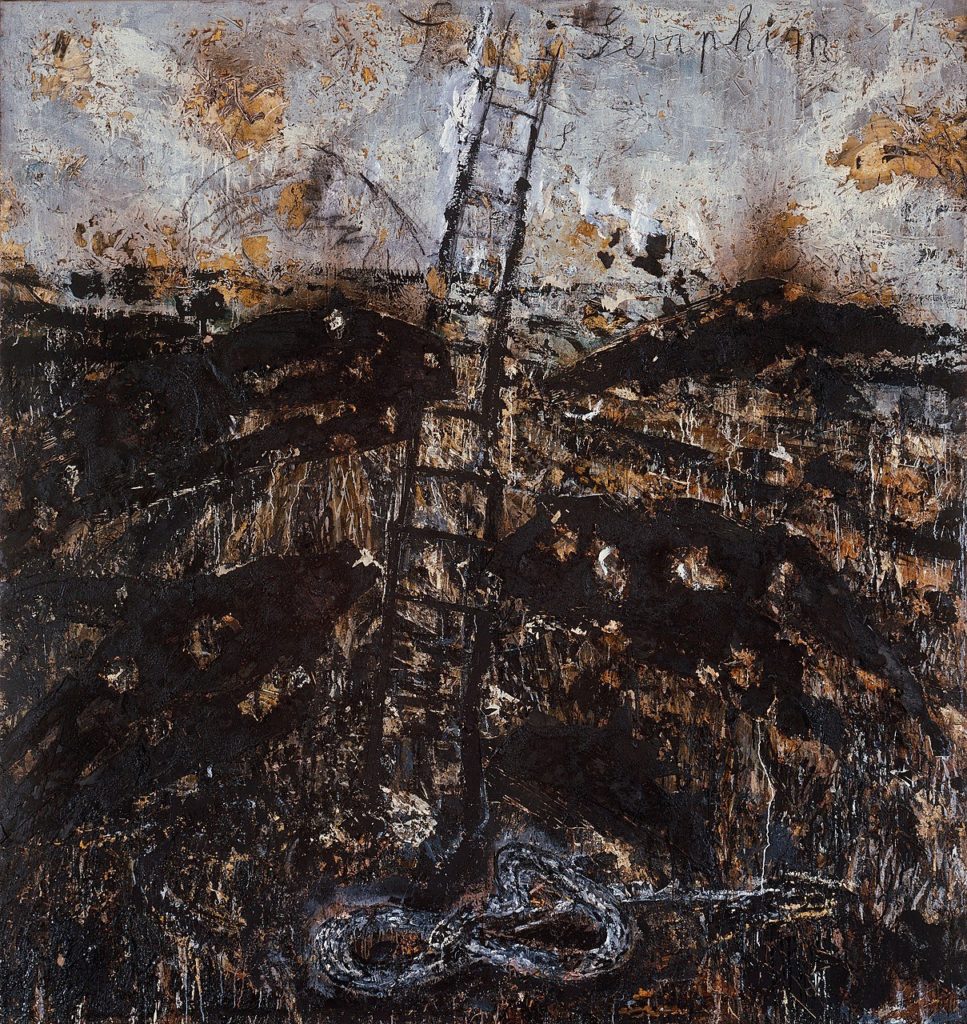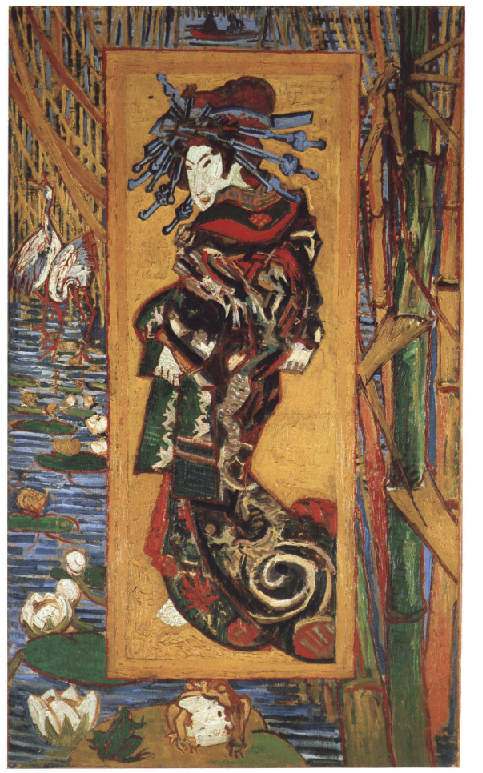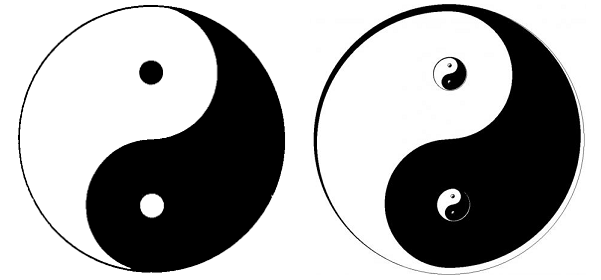Reactions to the Reactionary – The New Scholarship on Fascism, 2
March 1st, 2020[ Emlyn Cameron reviews Timothy Snyder‘s The Road to Unfreedom — second in a series [first here], and introducing a “Yale Theory of Fascism” — Emlyn Cameron holds a Masters from the Columbia School of Journalism ]
.
.
Timothy Snyder, The Road to Unfreedom
Timothy Duggan Books (2019)
Trade paperback, 368 pages
$ 17.00 (Amazon $10.39)
ISBN 0525574476
.
Because he and a few around him fear the death of the revolution,
China must be made to convulse.
Robert Jay Lifton, Revolutionary Immortality
.
“It’s always something!”
This phrase punctuated every illness, automotive break down, or household repair of my childhood. I am sure it is a typical of many homes where ends are made to meet, but only just.
Depending on the moment, it could be a wry observation – the good-natured sigh under pressure that enabled my mother to collect herself before addressing the latest unexpected fee – or it could be a hiss, lashing at a world that found a way to negate every surplus dollar she managed to save away. It is the cry of a person whose world cannot be improved, only maintained, and with great difficulty.
It is a bitter hiss of this kind, warped and magnified by demagogues, to which Timothy Snyder has addressed himself in his book The Road to Unfreedom. As a political atmosphere he calls it the politics of eternity – as in Orwell’s a boot stamping on a human face forever rather than the [spiritual] life everlasting – a sense that beyond the small and guttering campfire flame of one’s culture there are always strange others waiting to move in and destroy you. In this frame of mind, all political action is an act of self-defense or a preemptive strike against an eternal coalition of enemies.
In 283 pages, with 60 pages of footnotes which follow, Snyder makes the case that Russia’s history from the collapse of the Soviet Union through 2016 is the story of a nation suffering the effects of eternity politics. This moral rot, he goes on to argue, is something the Russian Federation would transmit to the United States, and to which America is currently acutely vulnerable.
Snyder gives special attention to the years 2011-2016, each year meant to exemplify a choice between a political virtue and an aspect of eternity politics. In each case, it seems, Russia has abandoned the virtue and thereby taken a step towards authoritarianism and eternity: sacrificing individualism for totalitarianism; succession for institutional failure; global integration for imperial ambitions; novelty for eternity; truth for lies; and equality for oligarchy.
While this thematic structure is suggested in the prologue, the events are too complex and Snyder too honest a scholar (and engaging a storyteller) to confine any chapter entirely to its explicit theme. The story of Russia’s transformation into a one-party state, the invasion of Ukraine, and subsequent Russian enthusiasm for Donald Trump’s presidential campaign is relayed in primarily chronological order with brief asides for historical context, and it is better for it. The result, in Snyder’s occasionally mordant voice, is a presentation that at times reads like a thriller with an ensemble cast of ne’er-do-wells and nationalists.
The compelling story only suffers in passages where the author too fully adheres to his thematic structure, as when he gives a history of Ukrainian and Russian statehood which stretches back over a thousand years to the 980s. The information is useful and telling but coming, as it does, in the fourth chapter (and just under a third of the way through the book as a whole), it jars a reader and may test patience as the narrative winds its way to recent events again.
All this aside, the themes Snyder identifies make the book a ready complement to his own pamphlet On Tyranny, his colleague Jason Stanley’s How Fascism Works, and other recent books on authoritarianism and nationalism. Together, Snyder and Stanley’s triptych might be said to form, loosely, a “Yale Theory of Fascism” that could prove significant.
Like other analyses, it presents fascism as a set of right-ward authoritarian symptoms, themes, or trends, broader than the particular political party from which it takes its name, while tackling how their expression has evolved in the internet age and distinguishing them from mechanically similar but ideologically distinct authoritarianisms of the left.
That Snyder’s thoughts in On Tyranny correspond to events explored in Road to Unfreedom is unsurprising, but the thrill of the book is in finding such copious examples. The most memorable, for me, was reading Road to Unfreedom’s description of the Night Wolves biker gang holding a nationalistic pageant for Putin, which so easily conjured On Tyranny’s injunction to be wary of paramilitary groups and militias which court the favor of nationalist politicians.
This possible connection came to mind again in March of last year, and not just to me. That groups like the border militias and Bikers for Trump, existing outside legal institutions, desire to act as auxiliary law enforcement and adopt its methods – to internalize the might and jurisdiction thereof into their lives as private citizens – should be recognized as one of the unnerving aspects of contemporary American life.
By “government of the people, by the people” was not meant this populist redistribution of coercive authority, but institutions so staffed and administered as to represent by the work of a mandated few the interests of the whole public. That this is not the perspective of many nominal patriots and rebels against government overreach is something Snyder’s books make uncomfortably difficult to ignore.
Not so easy to anticipate, but as rewarding, is the book’s interplay with Stanley’s work.
As discussed in my review of Stanley’s book, one feature of this interplay is Road to Unfreedom’s reiteration of the importance of sexual stigma to authoritarian politics (a specific preoccupation in the defining of enemies on which Stanley and Snyder’s Yale theory of fascism seems to put greater emphasis than earlier analyses). When Snyder says that Vladimir Putin has labelled political opponents “sexually deformed” in order to shift conversation away from political debate and onto cultural reaction to people’s sexual and gender identities, one sees clearly the action of fascist politics described in Stanley’s chapter on sexual anxiety.
But, in addition to this, the two works complement one another in their exploration of the fascist view of history: Both acknowledge that fascists trade in a debased version of history that claims the homeland was once an ethnically and culturally pure utopia, spotless in its innocence and righteousness, while the present is a sordid failure that has abandoned and thereby dishonored the virtuous past. Stanley cites as example, a leader of Germany’s Alternative für Deutschland party who said, “No other people have been so clearly presented with a false past as the Germans,” and spoke of taking pride in “the accomplishment of our soldiers in both world wars.”). However, Stanley’s text suggests this is an attempt to justify a social structure analogous to family roles evoked by the mythic past, and fascist politicians’ policies create future conditions which corroborate their rhetoric about the bankruptcy and squalor of the present, while Snyder’s book shifts our notion of how fascists obscure the past.
In Stanley’s work the past is simplified and sterilized, moral wrongs removed and forgotten – the doublethink and memory-hole method of Oceania in Orwell’s Nineteen Eighty-Four, in which the past is lied about and the records destroyed. But Snyder’s doublethink is a new approach, appropriate for our information-dense present: not denying that any given regime or arrangement of alliances existed, but pretending the contradictory portions of a national past are not mutually exclusive and unifying them as a justification for the present regime. In Putin’s Russia, this takes the form of a “celebration of both the far left and the far right in the past”, rehabilitating the images of both Stalin and right-wing figures who opposed communism in favor of hyper nationalism as part of a grand Russian tradition that now finds itself expressed through Putin.
In effect: The Czars were right and then Stalinists were right and now Putin’s crew is right. In fact, Russia has never been wrong.
This is a new kind of infallibility, where taking every position is just as emancipating to power as denying all positions taken before the present one. It is meaningful that this approach is being discovered and described in the age of the internet, with its vertiginous overabundance of tweets and takes and troll-bots which proliferate at the stroke of a key. In some ways, it even suggests that to destroy the evidence, as in Nineteen Eighty-Four , would be to admit weakness: It is not that we are now and have always been at war with Eastasia or Eurasia, we have been at war with both from time to time and each was a natural and just extension of the other .
This insight also illuminates some inklings available in earlier scholarship on authoritarianism that didn’t manage to be so clear. Take Umberto Eco’s essay Ur-Fascism which explained that inconsistent ideology was a major component of fascism and memorably suggested that a broadly defined section in a bookstore which housed both St. Augustine and New Age books on meditation was somehow faintly fascist. The moral is now more identifiable: It is not that this particular combination is sinister, or even just that fascists are cynical opportunists about what they will endorse – but because, in service of their authority, they must affirm that these things must be part of a greater, consistent whole. Academically honest classes on political philosophy may explore centuries of scholars as part of a culture’s intellectual history, holding each in high regard and acknowledging that many concepts or arguments that appear today have their roots in statements by one or another writer, but they do not pretend that each justifies the next – let alone the actions of a current office holder. To do so, in addition to butchering texts, would imply that a culture has not required improvement, only elaboration; that nothing a society has done required review or debate.
Not so, fascist historians claim: Anything that their society has created or learned from must be true and compatible, or their past is imperfect, and they are subject to question and failure. In addition, this serves as a ploy to leash the pride of any particular citizen over some particular part of their national history to a kind of nationalistic narcissism that admits no mistakes and carries no burden of responsibility for progress. This uncritical merging of dynamic, inconclusive intellectual history into a parade of justifications is in large part what is feared and decried when phrases like “Western Culture” are said to be dog whistles. Western Culture, if that is an idea that can be defined at all, is not some monolith (or Doric column), but many antagonistic influences, mediated between by each generation. And if that inconclusive whole has any beauty or promise, peculiar to itself or not, it is in that it has managed to be so many things at once – that it has been a forum for vehement disagreement.
The balancing of untroubled history and decadent present, it seems, is one aspect of a delicate game played by the authoritarians Snyder studies: to create a national life that is wracked with insecurities, while convincing the populace that the only solution to their constant dread is the raft of the policies which make their lives precarious – and to convince them that the future is just to be more of the same, without improvement.
This, the book explains, is at the heart of the destruction of the succession principle: The would be dictator harnesses the dread of the people to his own ends by billing himself as the solution to all problems; in order to solve his society’s ills, all power must be granted him (that this power usually also comes with extravagant privilege and luxury is mostly left unsaid); institutions are weakened and their discretion and authority accorded to the dictator, and because he is not the man he claims to be, things get worse, quickening the urgency with which his people feel they need to grant him exemptions and powers. He rides to power on and then ensures the anxieties of his peers. Finally, law is more or less what he chooses to say it is – the government becomes so closely identified with him that his personality might as well be the founding document. If he then rewrites the nation’s law so that he can retain power indefinitely it is at once a minor codification of the fact that everyone, in their hesitant expectation of catastrophe, has come to rely upon him for everything and the final measure necessary to ensure that they think they must.
This then creates a new anxiety: Someday, the people know, he will die, and they believe the capricious order with which he has become inseparably entangled will almost certainly die with him. This is despite works like Andrea Kendall-Taylor’s 2016 article, When Dictators Die, which indicates that the death of the leader in office only rarely “spell[s] the end of the regime or precipitate[s] instability in the form of coups or protests. On the contrary, authoritarian regimes have proven to be remarkably resilient when a leader dies,” even when most of the power lies with a single person (78% make it at least a year after their leader’s passing). Even when the leader died because of an assassination, authoritarian regimes collapsed within 5 years less than half the time. But this hesitance about what new unpredictability and struggle the future holds, like others which enable the authoritarian leader, is only facially rational.
The uncertainty surrounding the black maria and the midnight knock on the door is a constant fear, obvious and blunt as a truncheon. So, too is the knowledge that one’s family may or may not eat in the next week, or month, or year. And – whether one is a true-believer in the leader as last hope or a reluctant victim afraid of chaos in a power struggle – the resigned fear that the man who sends the cars and regulates the markets may not even be there the next day is a stranger, subtler anxiety, but Snyder suggests it too is there and founded on a mystery about when the next blow will fall.
Those who elected the dictator were insecure as they appointed him, they are insecure under him, and they believe that his death offers no more security than his life. And that anxiety gives him more of that feverish dedication his supporters have all along offered him. In this, the dictator has succeeded in creating the atmosphere he needs to arrogate whatever he should like to himself and to teach every mother, father, and child to expect nothing better.
“It’s always something.”
The book makes these feedback loops of insecurity coherent and memorable. In doing so they are with the reader often in the flood of current events – the subversion of succession being especially poignant now in light of Vladimir Putin’s recent call for constitutional reforms in Russia, and the speculation surrounding what these amendments could portend: It could be the first tremor indicating further personalization of the government around Putin, weakening the presidency he will leave in 2024 and according powers to his office as head of the State Council, with no end in sight of his place (someplace) in government. But it is, without a doubt, a cause for renewed uncertainty about the future of Russian government, an insecurity about the future which Snyder shows us can be turned to an authoritarian leader’s ends.
This idea of insecurity also sits at the heart of a potential disagreement over the meaning of the word Individualism in the triptych, one of a few examples of possible conflicts between Snyder and Stanley. Individualism is the most obvious example because of its prominence as one of Snyder’s political virtues and in Stanley’s description of Libertarianism, which he takes to be a largely facetious ideology amenable to fascist politics. But this conflict, I believe, can be resolved by distinguishing the definitions of Individualism the two authors use, based on their respective contexts. Snyder appears to be discussing the individual capacity for critical thinking and the political defense of a right to dissent. Meanwhile, Stanley seems to be using it as a name given to policies and beliefs which atomize citizens and make them either institutionally or morally incapable of getting forms of assistance or cooperation which make it possible for them to take meaningful political or personal action. In light of how Stanley and Snyder’s other work informs a reading of Road to Unfreedom, it is better read as a supplement to On Tyranny and How Fascism Works: They give the reader a framework for better understanding the book. Having read Road to Unfreedom first, and subsequently returned to it after completing the other two, I can attest to this effect firsthand.
This is especially true as Snyder’s style is attractive, aphoristic, and sharp (“the ink of political fiction is blood”), but can lack sufficient connective tissue to the examples which surround it to get its full point across, relying instead on the gravitas of its pronouncements. The other books, focused as they are on defining a theory of the events, fill this gap and make the epigrammatic aspects of Road to Unfreedom more approachable, with On Tyranny in particular offering practical examples of ways to make use of and defend the kinds of institutions, rights, and relationships which the other two works show to be critical in countering fascist politics.
It becomes a kind of proof of concept for the Yale theory lens of analysis, and it is a compelling one. In showing how the abstract observations he and Stanley have made can be applied to real history, he challenges us to do much the same, just as his earlier work enabled us to do so. When Snyder says, as he does in his acknowledgements, “at a certain point, I thought I was close to finishing a book about contemporary Russia, Ukraine, and Europe, only to realize its subject is much more British and American than I had thought,” it is a simple expression of his engagement with history, actively seeing new ways to apply what he has learned. It also makes clear that the utility of history is as analogy: What can we, who are so like those who have struggled like this before, learn from their effort? History is the warning that it can happen here, and a guide to ensuring it doesn’t.
Road to Unfreedom is the most ambitious of its contemporary works because it most fully represents the kind of action it asks us to take. Timothy Snyder has taken responsibility for a piece of history and, in so doing, made us responsible for our own – precisely what he shows us that fascists, in their need for an uncritical history and unknowable future, cannot do.













 :
:

